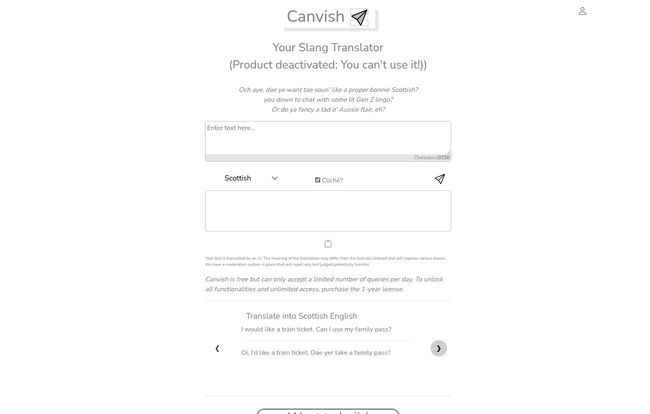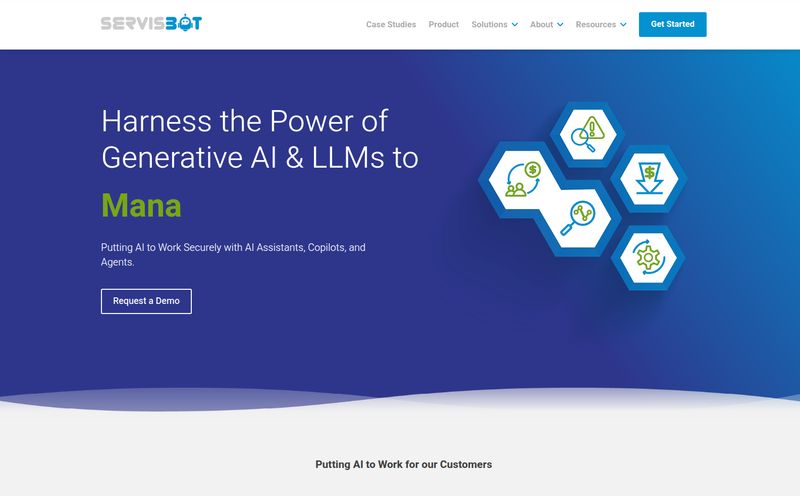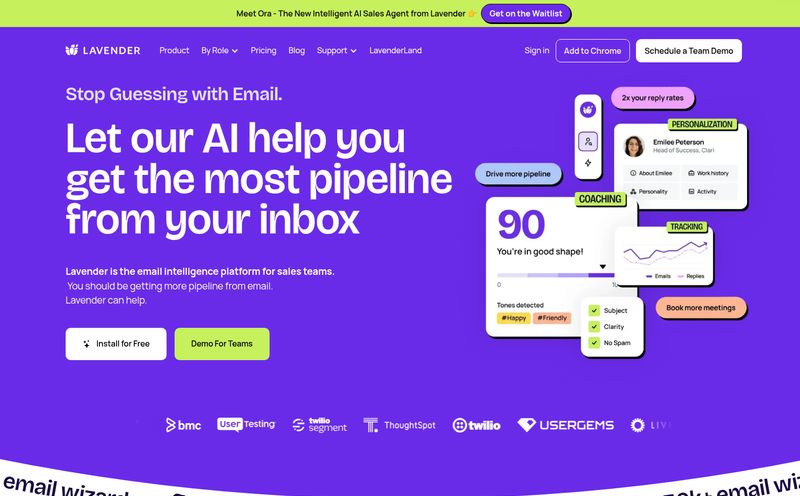In the world of SEO and digital marketing, we're absolutely swimming in AI tools. Every single day, there’s a new AI writer, a new image generator, a new analytics predictor. It’s a lot. And honestly, a lot of it feels like noise. But every now and then, a little project pops up that’s just… fun. A tool that doesn’t promise to 10x your ROI or revolutionize your workflow, but just makes you smile. For me, that was Canvish.
If you never got to use it, I’m sorry. You missed out. Canvish was a quirky, clever AI-powered slang translator. But if you try to find it today, you’ll be greeted by a digital ghost—a “Product deactivated” message and a sad little 404 error page. So, let's pour one out for a fallen soldier and talk about what made this little tool so special, and why its disappearance is kind of a bummer.
So, What on Earth Was Canvish?
Picture this: you need to write a social media post targeting a Gen Z audience, but you’re a millennial who still thinks “on fleek” is cutting-edge. Or maybe you're a writer working on a novel with a character from Glasgow and you want their dialogue to have that authentic ring. That's where Canvish came in. It wasn't just another Google Translate; it was a dialect and slang machine.

Visit Canvish
Its tagline was perfect: "Och aye, dae ye want tae soun' like a proper bonnie Scottish? Maybe you're a right wee chav from Northumbria. Or do ya fancy a tad o' Aussie flair, eh?" That playful tone was baked into its very core. You could type in a perfectly normal English sentence and watch the AI spin it into gold. The platform supported a fun mix of dialects, including:
- Scottish
- Australian
- Canadian
- Northumbrian
- Gen Z slang
And it went both ways! If you were totally lost trying to understand a teen's TikTok comment, you could paste it in and get a translation back into boring old standard English. It was a cultural decoder ring powered by artificial intelligence.
The AI Magic Behind the Slang
This wasn't some simple find-and-replace dictionary. Canvish was powered by a genuine AI model. How do I know? Well, the creators were transparent about it, even including the standard disclaimer that the AI's output might reflect the biases within its training data. This is a sign of a real machine learning tool, not a simple script. The translations had a certain… flavor. They weren’t always perfect, but they often captured the rhythm and feel of the dialect in a way a simple word swap never could. It felt like it understood context, not just vocabulary.
A Clean, No-Fuss Interface
The best part? It was incredibly simple to use. No crazy dashboards, no endless settings menus. Just a box to type your text, a dropdown to pick your slang of choice, and a big button to make the magic happen. In an industry obsessed with overly complex UIs, Canvish was a breath of fresh air. It did one thing, and it did it with a sense of humor.
The Good, The Bad, and The Deactivated
No tool is perfect, of course, and Canvish was no exception. It existed in that classic indie-developer space: full of heart but with a few rough edges.
What Made Canvish So Charming
For me, the appeal was obvious. It was a fantastic tool for creative writers, social media managers, and even role-players looking to add a bit of authenticity to their characters. The free version, while limited, gave you a real taste of its power. The support for specific, often-overlooked dialects like Northumbrian (Geordie, anyone?) showed a real passion for language. It wasn't just a gimmick; it was a well-thought-out, niche tool that filled a gap you didn't even know existed. It was just plain fun to mess around with, and in this high-stakes industry, sometimes fun is reason enough.
The Inevitable Drawbacks
Of course, there were limitations. The free tier capped your daily queries, which was a bit of a tease. To get the full experience and unlimited access, you needed to buy a 1-year license. Some of the more niche dialects and features were also locked behind this paywall. And, like any AI translation, it wasn't foolproof. You wouldn’t want to rely on it for, say, a legal document translation. But for creative purposes? It was more than enough. The biggest con, obviously, is that it no longer exists.
So, What Actually Happened to Canvish?
This is the million-dollar question. The site just says "Product deactivated." The URL leads to a void. My best guess? It was a passion project that ran its course. Running an AI tool, even a small one, isn't free. There are server costs, API calls, and maintenance. It's a labor of love.
Interestingly, the site had a little box on the side that said, "Want to build something similar? Learn from me: The Kaitchup - AI on a Budget." This linked out to a series of technical articles by the creator about building AI on a budget, covering topics like LoRA and QLoRA. This tells me the person behind Canvish was likely an indie developer who was more interested in the journey of building than in the business of scaling. And you know what? I respect that immensely. Sometimes, you build something cool, share what you learned, and move on. It’s a classic story in the startup and dev world. Not every project needs to become a unicorn; some can just be beautiful, fleeting horses.
It's a stark reminder of the ephemeral nature of the web. Cool tools can appear and disappear in the blink of an eye. So when you find one you love, support it while you can.
Frequently Asked Questions About Canvish
Even though it's gone, people are still curious. Here are some of the common questions, based on what the site used to say.
How did Canvish's AI translation work?
It used a custom-trained AI model to understand the context, grammar, and vocabulary of standard English and then translate it into the style and phrasing of a specific dialect or slang. It was more advanced than a simple word-for-word replacement.
Was Canvish completely free?
Yes and no. It had a free version that anyone could use, but it came with a daily limit on how many translations you could perform. To get unlimited queries and unlock all the dialects, you had to purchase a 1-year license.
What did "almost unlimited" access mean?
This was a clever bit of honesty from the developer. The FAQ mentioned that the licensed version was "almost unlimited" because, while users could make as many requests as they wanted, there were still fair-use policies in place to prevent abuse (like someone trying to crash the server with millions of requests).
How did the platform handle unsafe content?
Canvish had a moderation system built in. It was designed to reject prompts or text that contained harmful, hateful, or explicit content, preventing the tool from being used to generate offensive slang.
Why can't I access Canvish anymore?
The creator officially deactivated the product. While there's no public statement on the exact reason, it's common for solo-developer projects to shut down due to factors like high operational costs, lack of time, or a shift in focus to new projects.
A Final Word on a Fun, Fleeting Tool
So, RIP Canvish. You were a weird, wonderful little corner of the internet. You were a testament to the fact that AI doesn't always have to be about productivity and profit. It can also be about connection, culture, and a wee bit of craic. It's a shame it's gone, but it's a great reminder to appreciate the creative, quirky projects that pop up. Now, if you'll excuse me, I'm off to manually figure out what "rizz" means. Again.
References and Sources
- Canvish Official Website (Archived View): (No active link available due to deactivation)
- The Kaitchup - AI on a Budget Blog: (As referenced on the Canvish site, specific URL unknown)



